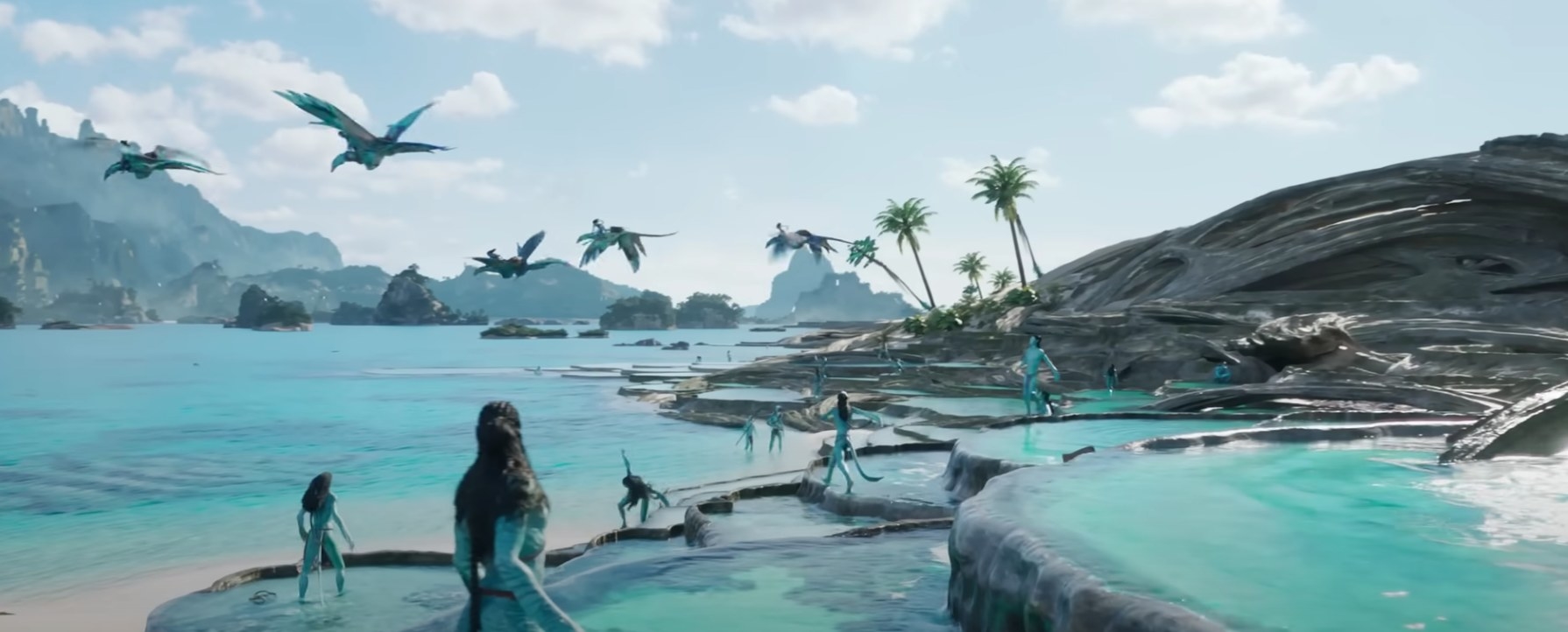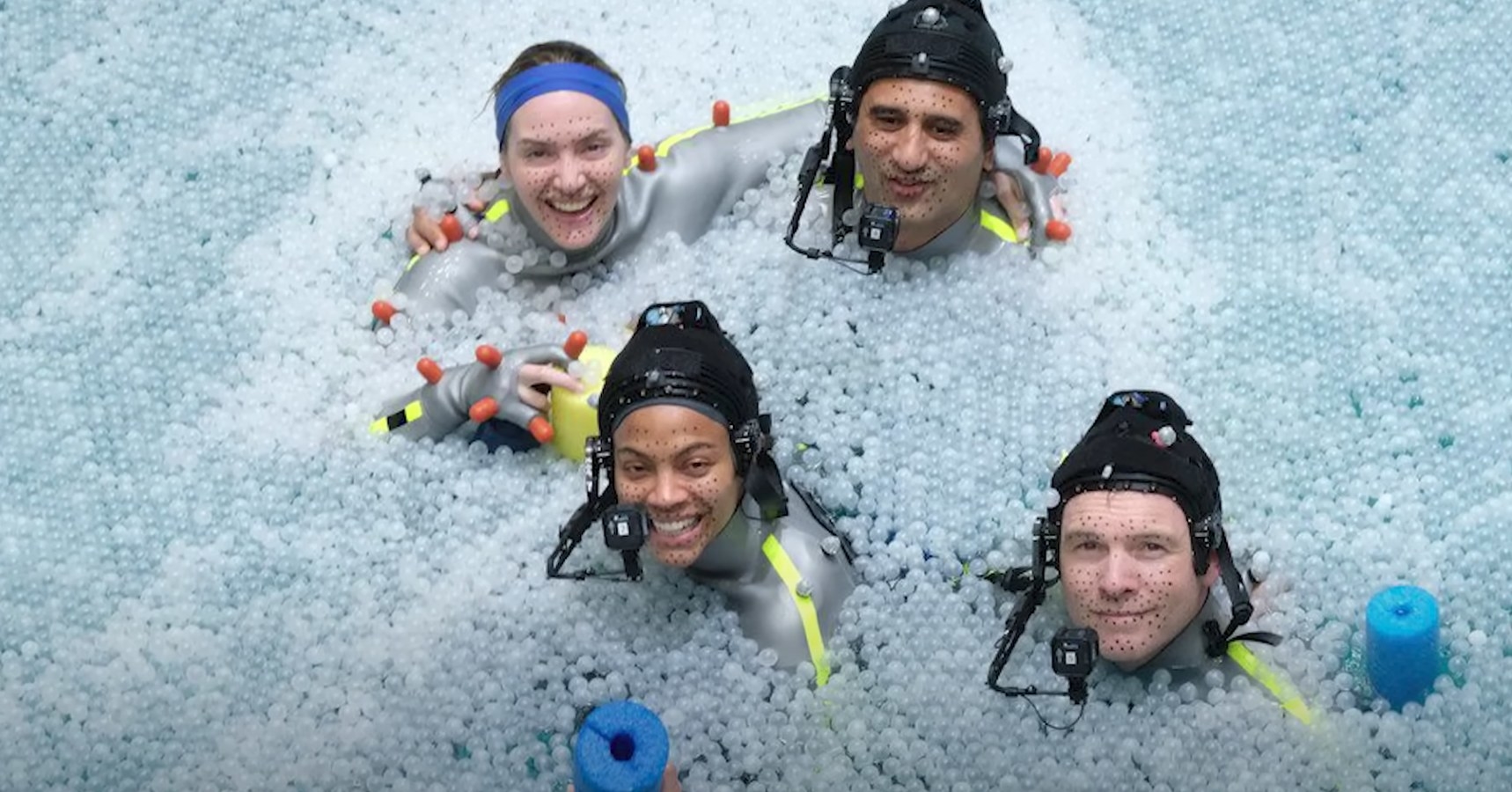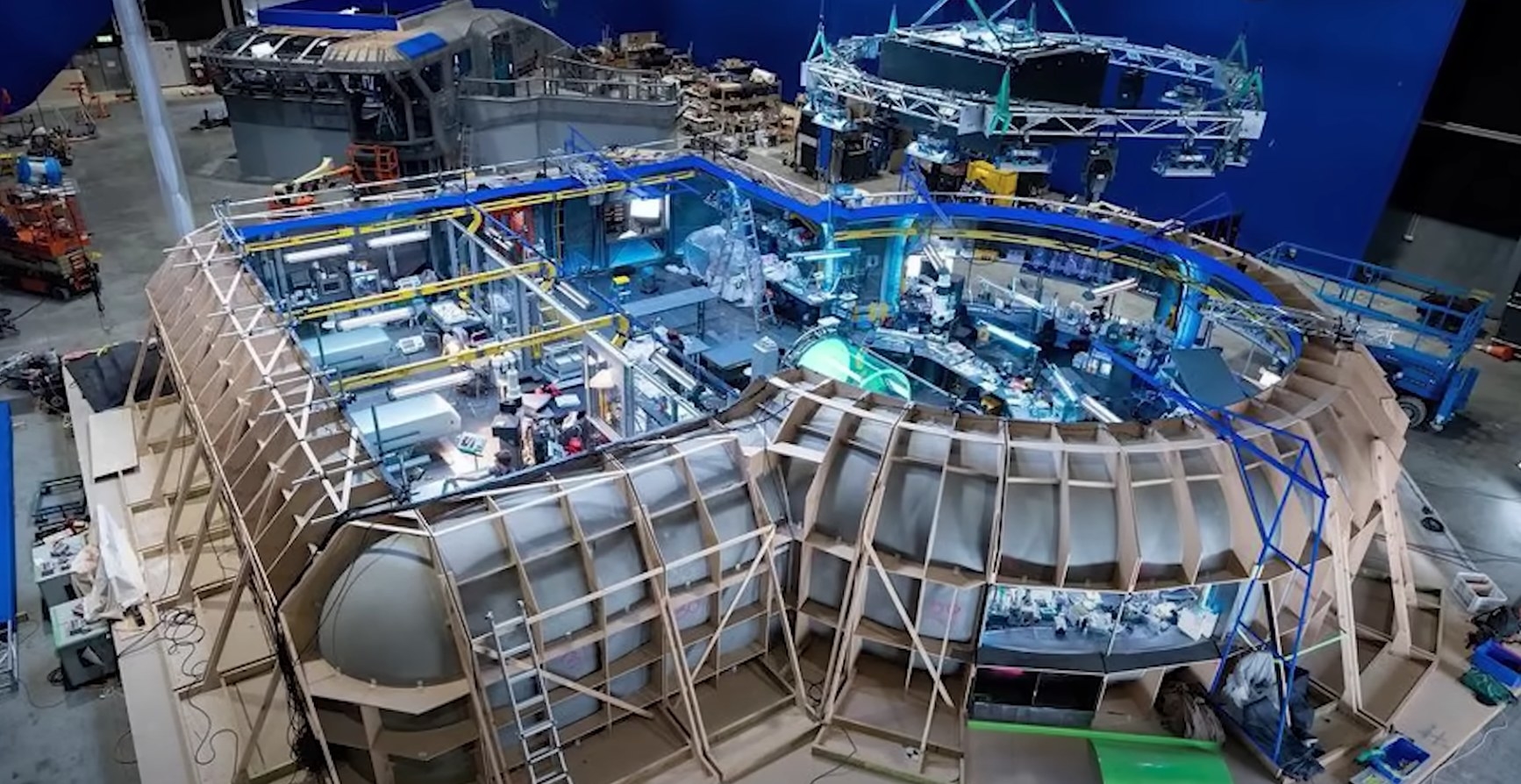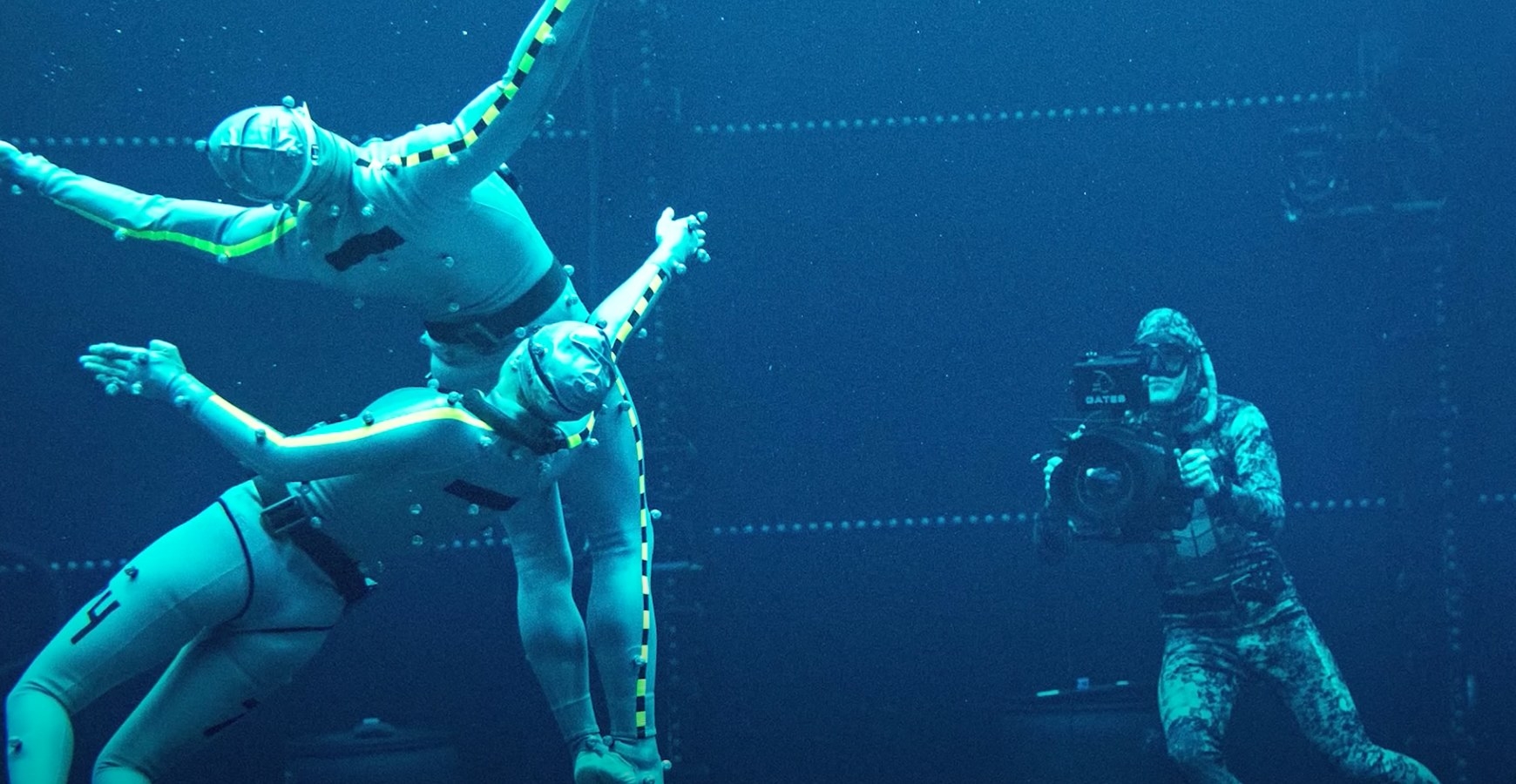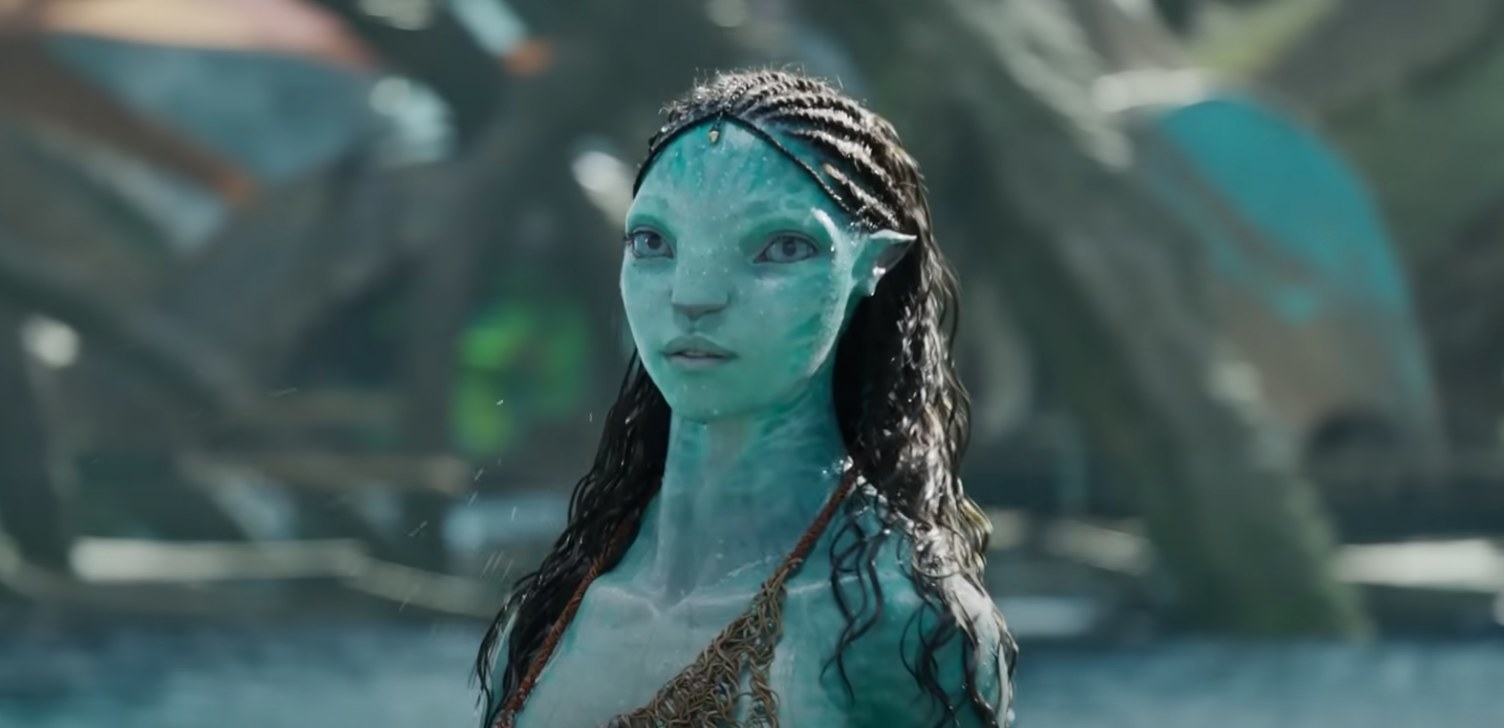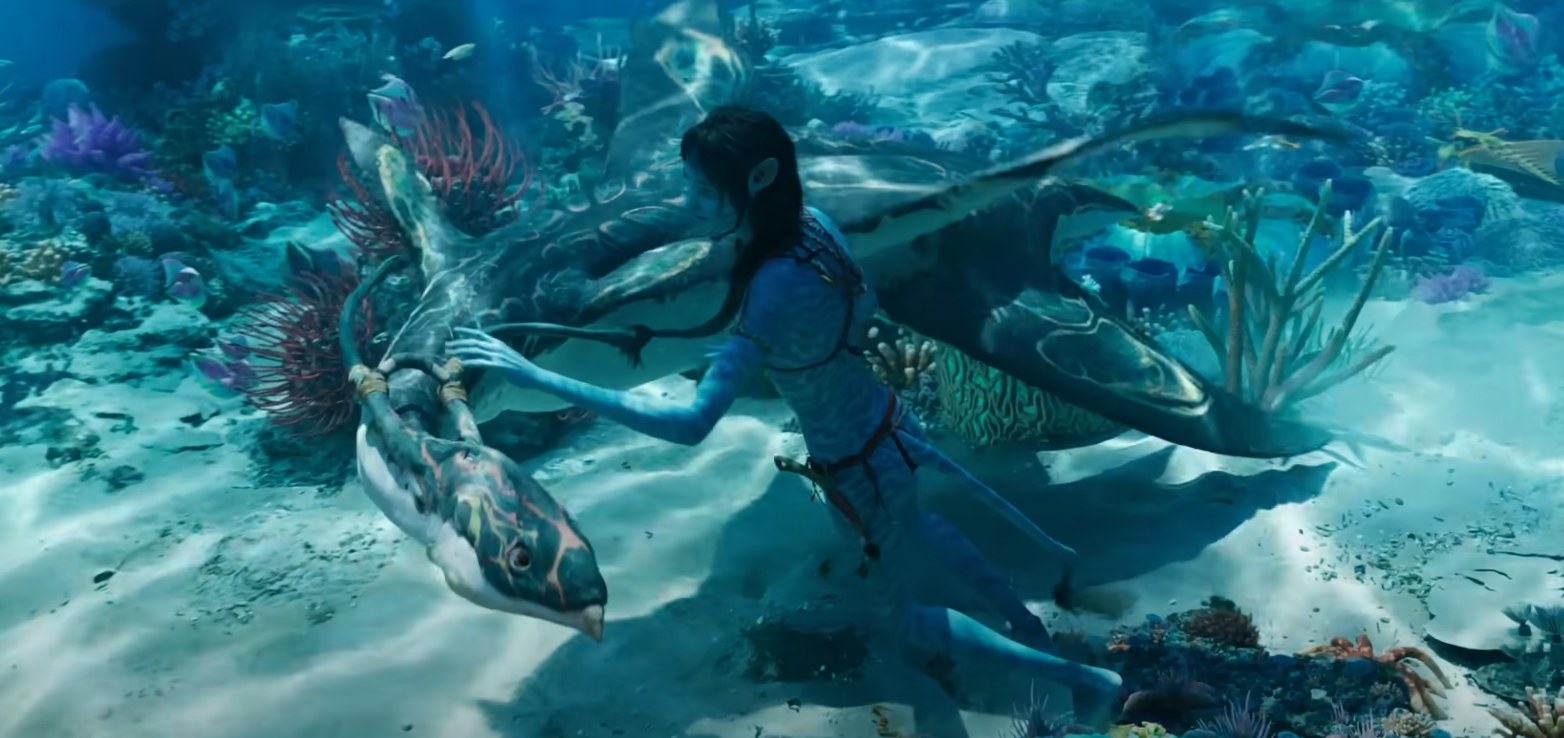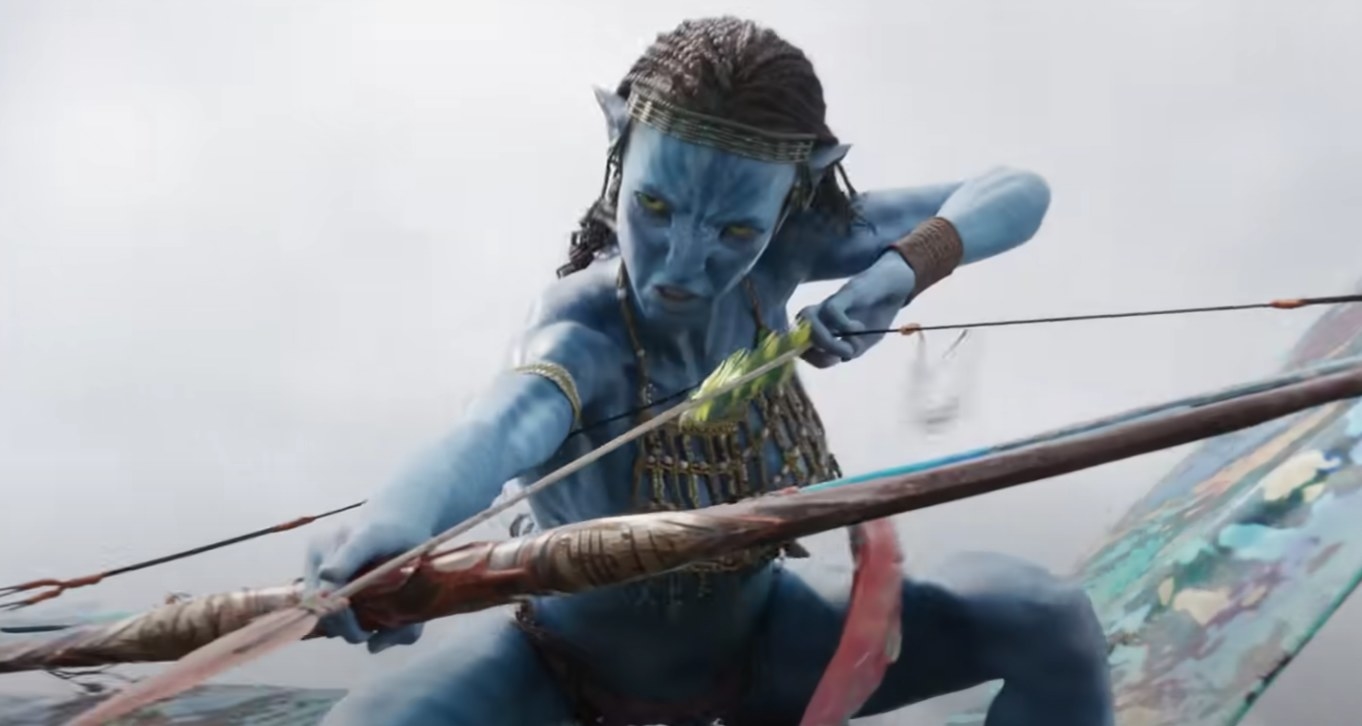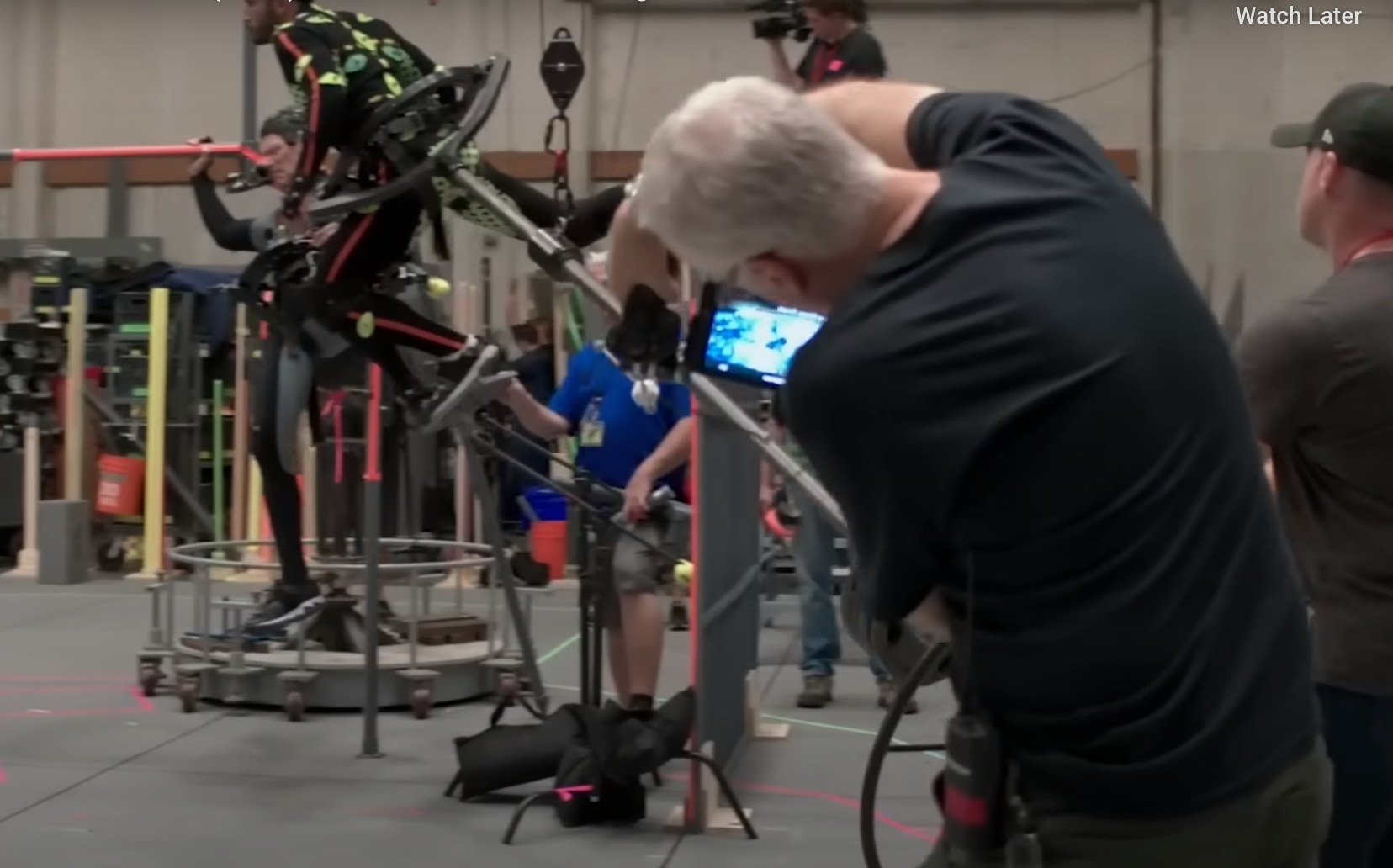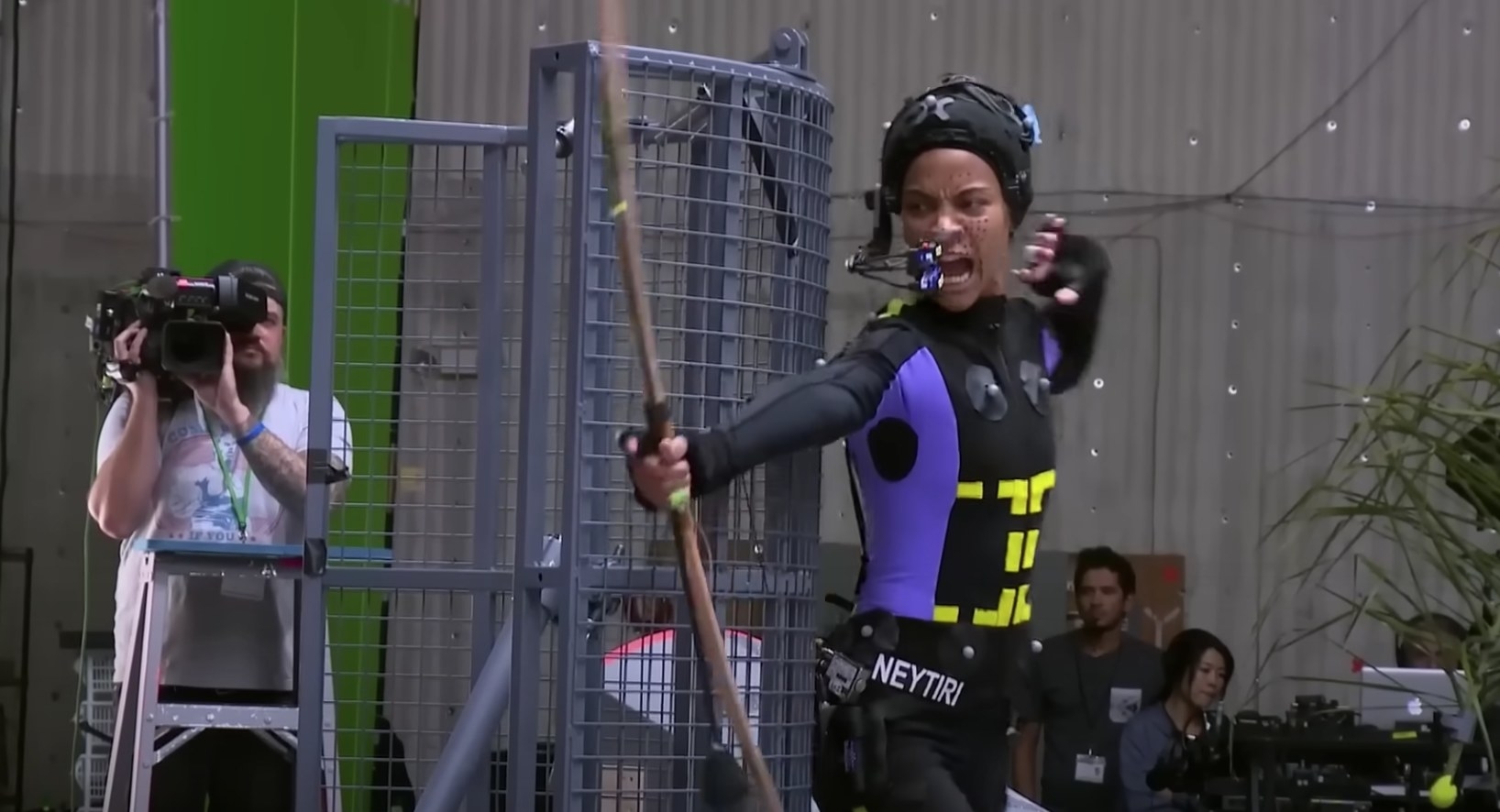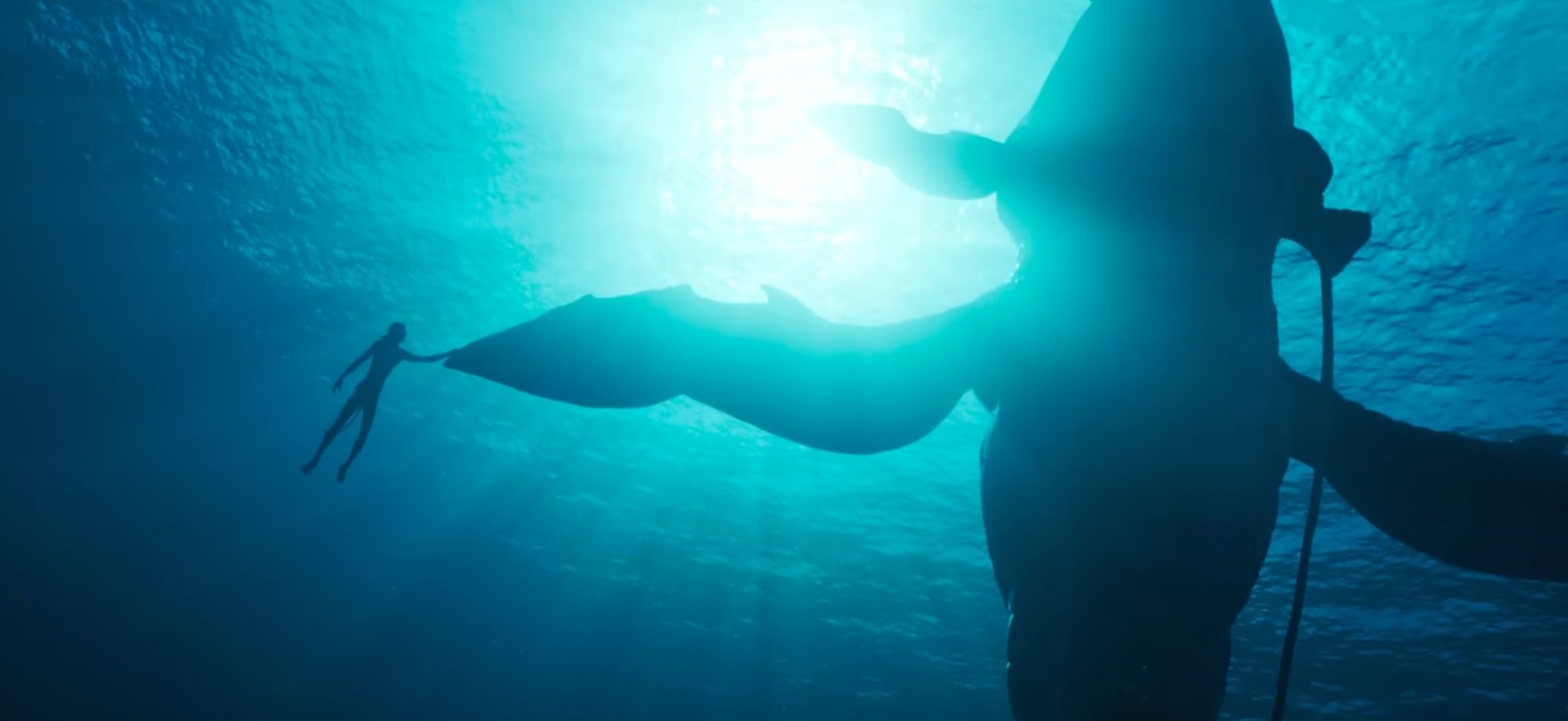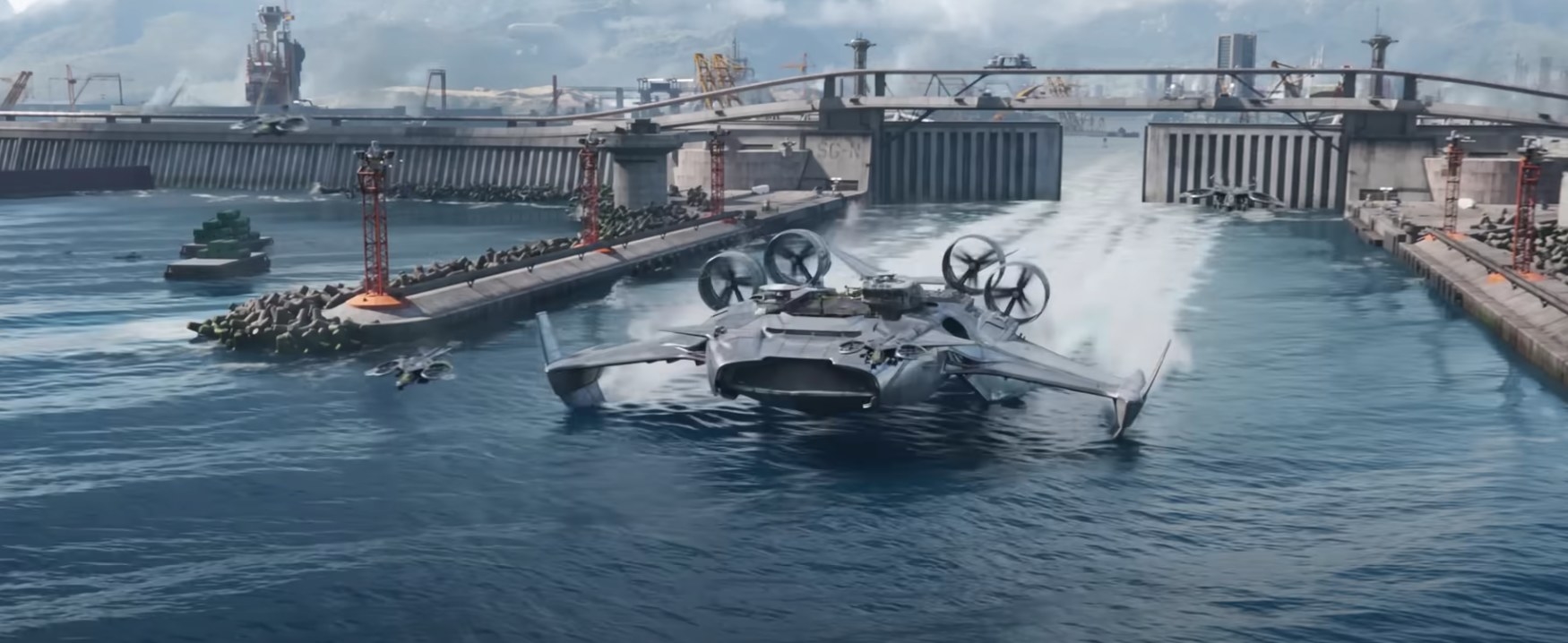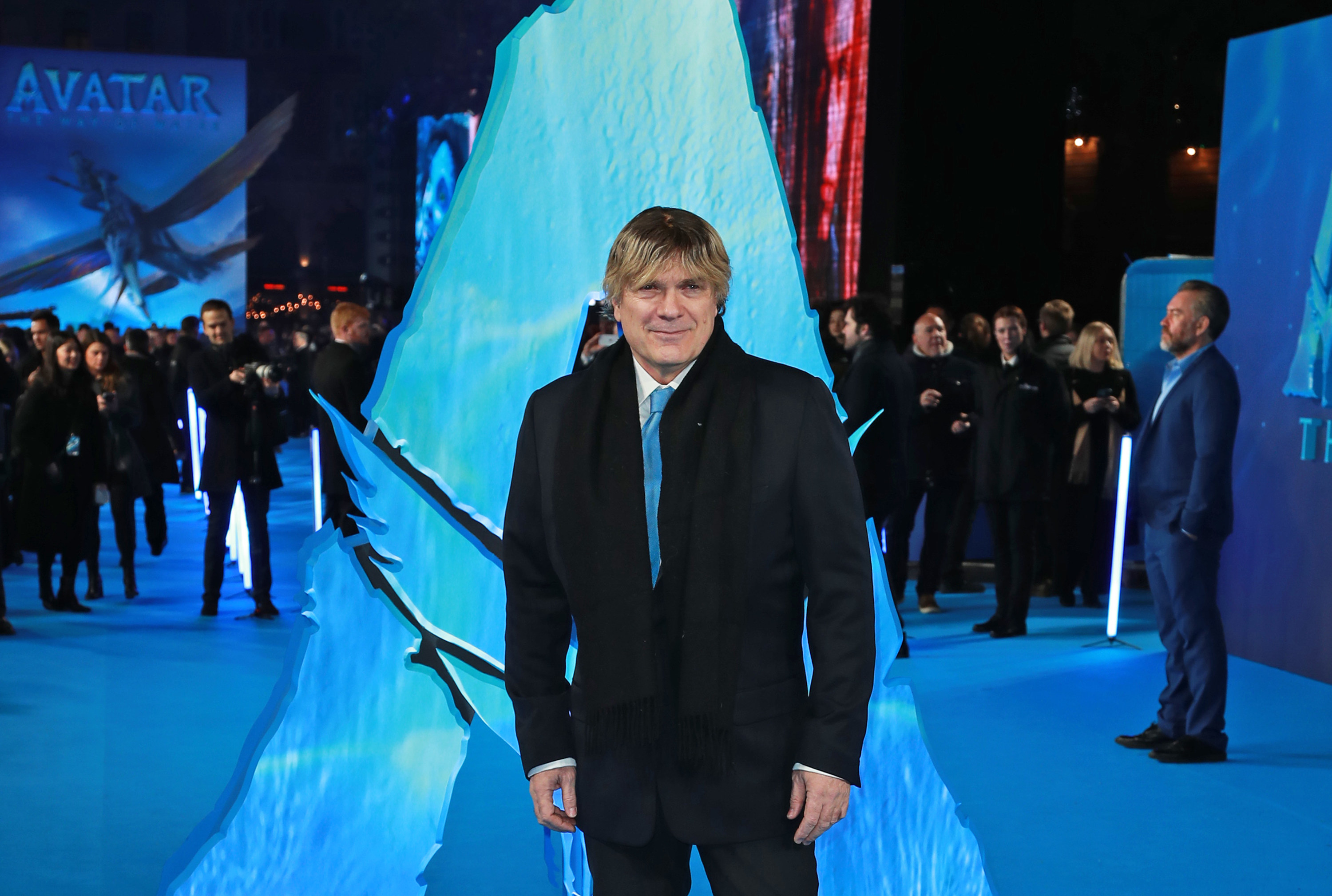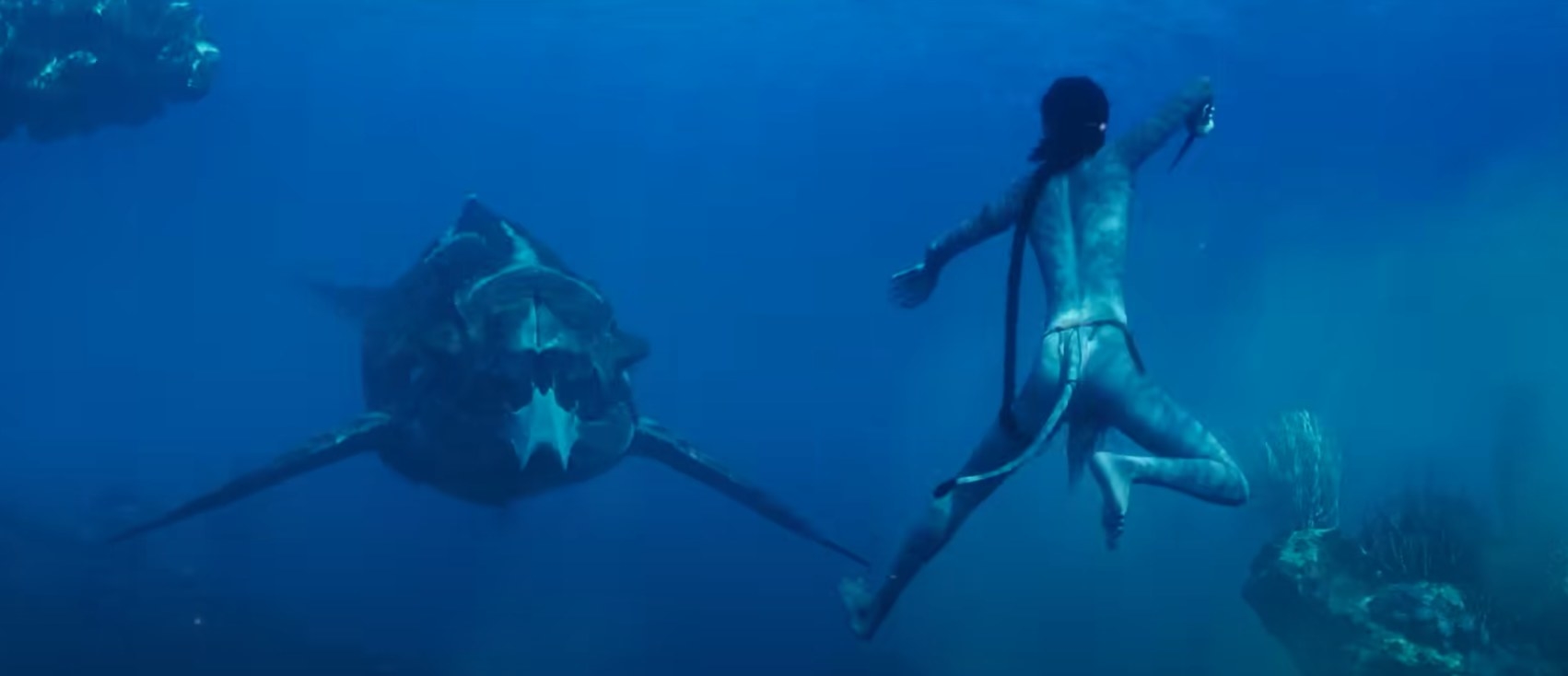For a film of epic proportions, I had to know more about the behind-the-scenes process for all of us film nerds out there. So, I bring to you, 19 of my favorite BTS facts about the new film… Sounds like a lot, doesn’t it? Well, the latest sources have now hit Cameron’s point home, as it was recently revealed that the film could have cost a ginormous $350-$400 million. Yikes! One of the key differences between Avatar: The Way of Water and some other films that use CGI characters is that all of the actors really did act out their scenes, and advanced motion capture technology meant that their eyes, facial expressions, emotions, and movements are preserved and translated into the CGI character. To compare, one example of a film that didn’t do this was Venom, as Tom Hardy previously explained that motion capture wasn’t used, leaving us to understand that Venom and all of his movements and expressions were brought to life by the digital animators (which is still amazing, by the way). I don’t know about you, but I think that’s one of the main reasons why Avatar: The Way of Water is able to convey so much emotion. For a fictional out-of-this world planet and characters, it feels very human, and if you watch the incredible BTS clip above, you get to see side by side how the actors work as their characters are brought to life in the digital world. As visual effects supervisor, Richie Baneham, explained in an interview, “If an actor is genuinely in water, there’s a viscous resistance. It informs the actor’s choices. … That’s what makes it feel real.” When watching the film, you’ll really notice and get a feel for the effort that has gone into the underwater moments, from the seamless riding of the Skimwing sea creature, to how the character’s hands sway when interacting with the aquatic plants. Whilst the actors and stunt team may not really be in Pandora’s ocean, you’ll spot these magical moments that would have probably felt a little more stiff and unnatural if filmed on dry land…(don’t mention Aquaman, don’t mention Aquaman). One of the tanks was used for training and intimate character moments, whilst the other beast of a tank (measuring 120 feet long, 60 feet wide, and 30 feet deep with a 250,000-gallon capacity, to be exact) was full of wave and current machines designed to enhance the action-packed sequences. Mind. Blown. Toward the end of the film, there is a huge and seriously long-winded fight scene between Jake Sully (Sam Worthington) and Quaritch (Stephen Lang). As the sequence played out, I was sucked into believing that there really were lives at stake! Then, I got home and watched some BTS footage, and now, I know why. … The sequence really was filmed underwater. As you can see in the underwater featurette video, the stunt doubles play out the fight in what I would say is a massively terrifying situation. Plus, when talking about acting the fight out with Lang, Worthington said that it did have its risks for a few reasons. First of all, when he grabs Lang in a chokehold, he said that the realism “that you’re trying to get across means he could die,” and the communication element goes out of the window because you just can’t talk. Luckily, for the cast, Worthington said that you just have to rely on the safety people and the director watching it on the screens, as well as relying on each other…but the breath hold technique does kind of disappear as trusting it becomes easy. (For someone who can’t hold their breath for longer than a minute, this makes me feel uneasy!) Hats off to both the actors and stunt people for virtually risking their lives for us to be entertained! It definitely paid off! Garvin explained that on a typical busy shoot day, you’d see 26 scuba divers and free divers in the water at once, going up and down like yo-yos. That’s not forgetting about the grip and lighting department who were forever submerging to tweak something on the set. It’s one thing to imagine how hard it must have been for the actors to fully convey their storylines whilst submerged, let alone the amount of group effort it must have taken for the cast and crew to log that many hours of hard, underwater work! Not Cameron, though. The director ensured the film was filmed for IMAX and in 3D, with a special Sony CineAlta Venice 3D system that could be used underwater. Is there anything this man doesn’t do?! When talking about the Ilu, the rather domesticated reef swimmer, Cameron spoke about how it has the neck of a Plesiosaurus and the body of a manta ray that had lower and upper wings. When watching the film, you’ll spot other unworldly wonders that are still a bit familiar to the eye — here’s looking at the Tulkuns in particular! James Cameron, I’m sorry I doubted you. Turns out, the costume designer, Deborah L. Scott, and her team built every single bracelet, necklace, and fabrics worn by the Na’vi people. The reason for this? “Because the technology is so good at capturing the image and texture of these pieces, you can’t draw it in the computer and expect it to have the three-dimensional life it has.” So, the costume department put in a ton of effort to make sure the designs, fabric, and how everything interacted with the water would inform the digital artists well enough to get it to look real! Jackson took this approach for The Lord of the Rings trilogy, and safe to say, the result was a masterpiece, so Cameron decided to follow a tried and tested method. In an interview, Cameron explained that he had to “play this [to actors] as if the books already existed,” so the only way to do that was to write all the scripts and let the actors see just how far their characters were going and what it all meant. Now that’s got me wanting a sneak peak of what’s to come! With so much time being spent on the writing for all of the remaining Avatar films, it’s no wonder that filming also took a pretty long time, with shooting starting in 2017 and wrapping in 2020. The making of Avatar 2 was a long process for sure. To put the filming time into perspective, one of the biggest grossing blockbuster films in recent years, Avengers: Endgame, was filmed within just five months. In terms of the process, Cameron and the writing team sat in the writing room for eight hours a day over five months, working out the story across all remaining Avatar films so it connected as one saga. One trick in his book was to not tell each writer which film they’d actually been assigned to until the last day, so everyone was equally invested across all stories. Sneaky and clever! The risky moment? The friendship exploration of Lo’ak (Britain Dalton) and the giant Tulkun, Payakan. Apparently, the worries were over the fact that it’s a storyline that is pretty alien to viewers! Cameron expressed that the four editors were “run of show for five years, with two other editors who were in for a year or a couple of years, and then a staff of about a dozen assistants split between LA and New Zealand.” The process was intensive because the team basically edited the whole movie twice as Rivkin explains: “Our first tasks as scenes are shot is to go through the dailies with [Cameron], find out what he’s interested in, and create what we call a performance edit. After that, Cameron begins his virtual camera process by figuring out what’s a closeup or wide shot etc., tweaking the lighting, and as those shots come into the editing room, they basically have to edit everything again!" “I’ve been tasked with bringing new textures, voices, and elements to the score. The sea is integral to many of the themes and motifs in my score; the scintillation of light, the ebb and flow of waves, and the connection of the Na’vi with the water were all inspirations,” says Franglen. Kiri is Jake and Neytiri’s adopted daughter, and one who seems to have an affinity with the world around her. She’s a quirky and strong character, and super likable! But, when Weaver first saw Kiri’s initial design, she objected to it because she felt it was too neat and too pretty, so Kiri was developed to have a bit of a messier design and for her to be more like the awkward teenager she was meant to be. The high demand was mostly due to the need to simulate water for the film. I wonder if we’ll ever see Norton in any of the planned Avatar sequels instead?
